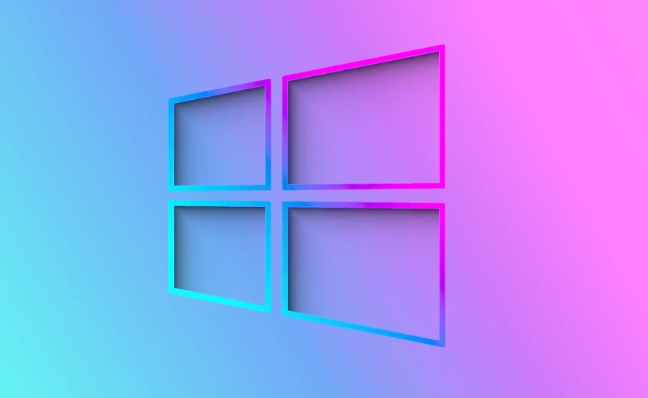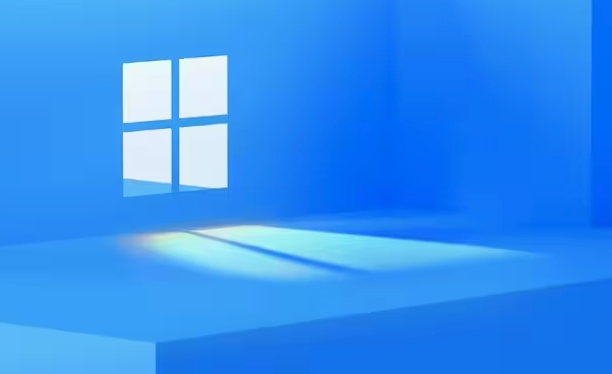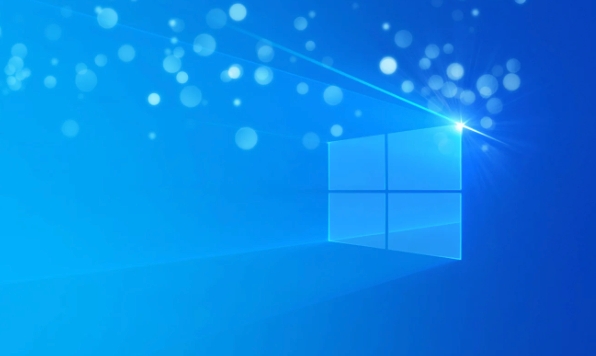How to uninstall Microsoft Edge from Windows?
Jul 08, 2025 am 01:06 AMMicrosoft Edge cannot be fully uninstalled because it is deeply integrated into Windows systems but can be removed using PowerShell by disabling or replacing the default browser. The method of removing some users using PowerShell or using third-party tools is required first of all. Microsoft Edge, as one of the core components of Windows 10 and 11, cannot be uninstalled directly like ordinary applications; if you want to stop using Edge, there are three main methods: 1. Change the default browser in "Settings" to replace Edge's daily functions; 2. Run the PowerShell command with administrator permissions to remove the Edge application itself only in the Professional or Enterprise version system (but some components may still remain and cause system function abnormalities); 3. Use third-party tools to perform in-depth deletion, but this method has the risk of system instability or failure of updates, and ordinary users are not recommended to try it. To sum up, the safest and most effective way is to disable Edge and set other browsers as default rather than force uninstalling.

Uninstalling Microsoft Edge isn't as straightforward as removing regular apps because it's built into Windows. But depending on your version of Windows and what you're trying to achieve, there are options.

Why Can't You Uninstall Edge Normally?
Microsoft doesn't let you uninstall Edge the way you would remove a standard app — especially if you're using a newer version of Windows like Windows 10 or 11. That's because Edge is now deeply integrated into the OS. It handles things like the Start menu search bar, web links from system apps, and even some settings panels. Trying to remove it completely can cause issues with system stability.

Option 1: Disable or Replace Edge (Windows 10/11)
If your goal is to stop using Edge altogether, the easiest path is to disable it or replace it as the default browser.
- Go to Settings > Apps > Default apps
- Change the defaults for web browser, PDFs, and links to your preferred browser (like Chrome or Firefox)
- You can also set another browser as the default in Edge itself by going to Settings > Default browser
This won't remove Edge from your system, but it will prevent it from launching automatically when you click links or open files.

Option 2: Use PowerShell to Remove Edge (Only Works on Some Editions)
If you're running a Pro or Enterprise edition of Windows 10 or 11, you can use PowerShell to remove Edge. This method removes the app but not all system components — so it might still show up occasionally.
Here's how:
- Open PowerShell as Administrator
- Type this command and press Enter:
Get-AppxPackage -allusers Microsoft.MicrosoftEdge | Remove-AppxPackage
?? Warning: Removing Edge this way could cause certain features like Cortana or the Start menu search to behave oddly.
Also, after a Windows update, Edge may return — since updates often restore core system apps.
Option 3: Use a Third-Party Tool (Not Fully Safe)
Some third-party tools claim they can fully remove Edge. However, these usually modify system files or registry entries, which can lead to instability or break future Windows updates.
Unless you have a very specific reason to go this route — and understand the risks — it's generally better to just disable or replace Edge rather than try to delete it entirely.
Final Thoughts
Uninstalling Microsoft Edge completely isn't really possible on most Windows versions without causing side effects. If you don't want to use it, just disabling it and setting another browser as default is usually enough. The rest is more trouble than it's worth.
Basically that's it.
The above is the detailed content of How to uninstall Microsoft Edge from Windows?. For more information, please follow other related articles on the PHP Chinese website!

Hot AI Tools

Undress AI Tool
Undress images for free

Undresser.AI Undress
AI-powered app for creating realistic nude photos

AI Clothes Remover
Online AI tool for removing clothes from photos.

Clothoff.io
AI clothes remover

Video Face Swap
Swap faces in any video effortlessly with our completely free AI face swap tool!

Hot Article

Hot Tools

Notepad++7.3.1
Easy-to-use and free code editor

SublimeText3 Chinese version
Chinese version, very easy to use

Zend Studio 13.0.1
Powerful PHP integrated development environment

Dreamweaver CS6
Visual web development tools

SublimeText3 Mac version
God-level code editing software (SublimeText3)

Hot Topics
 Windows can't access shared folder on network
Jun 30, 2025 pm 04:56 PM
Windows can't access shared folder on network
Jun 30, 2025 pm 04:56 PM
When encountering the "Windowscan'taccesssharedfolderonnetwork", you can usually solve the problem through the following steps: 1. Turn on the network discovery and file sharing function and turn off password protection; 2. Make sure that the target computer is enabled to share and set the correct permissions; 3. Check the firewall rules and service status to ensure that it allows shared access; 4. Use the credential manager to add network credentials for long-term and stable connection.
 Windows 'Getting Windows ready, Don't turn off your computer' stuck
Jun 30, 2025 pm 05:18 PM
Windows 'Getting Windows ready, Don't turn off your computer' stuck
Jun 30, 2025 pm 05:18 PM
When you encounter Windows stuck in the "GettingWindowsready, Don't turnoff your computer" interface, you should first confirm whether it is really stuck; 1. Observe whether the hard disk indicator light is flashing, 2. Check whether the fan sound has changed, 3. Wait at least 30 to 60 minutes to ensure that the system has enough time to complete the update operation.
 Windows is stuck on the welcome screen
Jun 30, 2025 pm 04:44 PM
Windows is stuck on the welcome screen
Jun 30, 2025 pm 04:44 PM
Wait for a few minutes and try to call out the task manager to confirm whether it is fake death; 2. Force shutdown to enter the recovery environment twice, use safe mode to uninstall the driver, turn off automatic login, and check and kill viruses; 3. Use other administrator accounts or new accounts to determine whether the user configuration file is damaged; 4. Uninstall or roll back the hardware driver, especially the graphics card driver, unplug the peripherals to troubleshoot hardware conflicts; 5. Use the sfc and DISM commands to repair the system files, and if it is invalid, back up the data and reinstall the system. When Windows is stuck in the welcome interface, you should first eliminate the false death situation, then check the user configuration, driver and system file integrity in turn, and finally consider reinstalling the system.
 Windows clipboard history not working
Jun 30, 2025 pm 05:14 PM
Windows clipboard history not working
Jun 30, 2025 pm 05:14 PM
When the Windows clipboard history is not working, you can check the following steps: 1. Confirm that the clipboard history function is enabled, the path is "Settings>System>Clipboard", and if it is not enabled, Win V will not respond; 2. Check whether the copy content type is limited, such as large images, special formats or file paths may not be saved; 3. Ensure that the system version supports it, Windows 101809 and above, and some enterprise versions or LTSC do not support it; 4. Try to restart the ClipboardUserService service or end the clipups.exe process; 5. Clear the clipboard cache or reset the settings, close and then turn on the "Clipboard History" or run the "echooff|clip" command to clean up the cache
 How to run an app as an administrator in Windows?
Jul 01, 2025 am 01:05 AM
How to run an app as an administrator in Windows?
Jul 01, 2025 am 01:05 AM
To run programs as administrator, you can use Windows' own functions: 1. Right-click the menu to select "Run as administrator", which is suitable for temporary privilege hike scenarios; 2. Create a shortcut and check "Run as administrator" to achieve automatic privilege hike start; 3. Use the task scheduler to configure automated tasks, suitable for running programs that require permissions on a scheduled or background basis, pay attention to setting details such as path changes and permission checks.
 How to fix a stuck Windows restart screen?
Jun 30, 2025 pm 05:10 PM
How to fix a stuck Windows restart screen?
Jun 30, 2025 pm 05:10 PM
Don't rush to reinstall the system when the computer is stuck in the Windows restart interface. You can try the following methods first: 1. Force shutdown and then restart. Apply to the situation where the update is stuck. Repeat two or three times or can skip the lag; 2. Enter the safe mode to check, select Start repair or system restore through troubleshooting. If you can enter safe mode, it may be a driver or software conflict; 3. Use the command prompt to repair the system files, enter the three commands sfc and dism in the recovery environment to repair the damaged files; 4. Check the recently installed hardware or driver, unplug the non-essential devices or uninstall the new driver to eliminate incompatibility issues. In most cases, the above steps can solve the phenomenon of restart lag. If it really doesn’t work, consider reinstalling the system and paying attention to backing up data in advance.
 Windows cannot find 'ms-settings:'
Jun 30, 2025 pm 04:31 PM
Windows cannot find 'ms-settings:'
Jun 30, 2025 pm 04:31 PM
When you encounter the prompt "Windowscannotfind'ms-settings:'", the system settings page usually cannot open normally. The solution is as follows: 1. Check the integrity of the system file and run the sfc/scannow and DISM/Online/Cleanup-Image/RestoreHealth commands as administrator; 2. Reset the default protocol handler and confirm that the default application of ms-settings is "Settings" in "Default Application By Protocol"; 3. Check whether the registry key HKEY_CLASSES_ROOT\ms-settings exists and is complete, and import the registry backup of the normal system if necessary; 4. Use the system
 'This operation has been cancelled due to restrictions in effect on this computer' Windows fix
Jun 30, 2025 pm 04:47 PM
'This operation has been cancelled due to restrictions in effect on this computer' Windows fix
Jun 30, 2025 pm 04:47 PM
The error "This operation has been cancelled because of restrictions on the computer" is usually caused by permissions or policy restrictions. Solutions include: 1. Check whether to use an administrator account, and if not, switch or change the account type; 2. Run the program as an administrator, or set a shortcut to always run as an administrator; 3. Check Group Policy restrictions, set suspicious policies to "not configured" or "disabled", but be careful that there is no Group Policy Editor for the Home Edition; 4. If registry editing is disabled, you can re-enable it by creating a .reg file; 5. Troubleshoot third-party software interference, temporarily close the security software or management startup items. Trying the above methods in order usually solves the problem.






